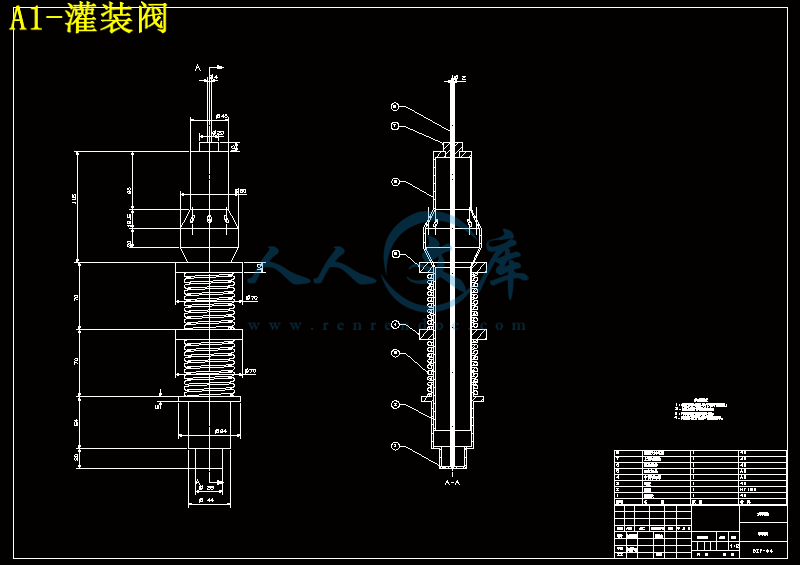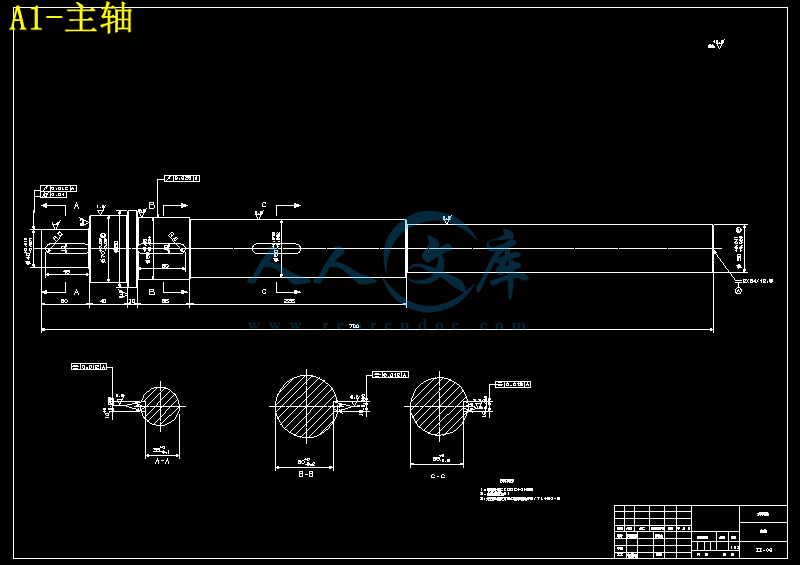摘 要
本论文设计是对液体灌装生产线灌装阀的设计,以及液体的灌装方法在旋转灌装机上的布置与安排。该液体灌装阀的结构是阀体的上部有进液口,阀的下部有出液口,且出口与灌装头部位有着密封装置,通过挤压力与密封装置接触,阀体上部设有排气管,该排气管的一端从阀体内部穿过之后伸出液体出口与灌装头连接在一起而另外一端则伸出液体与外部联通从而排除气体,在液体灌装阀导通是阀体的上部进液口与下部出液口会形成一个液体通道使得液体可以从此通道进入瓶体,灌装头的最大尺寸与大于液道的最大尺寸,和滑动体的外径对齐,可以避免灌装过程中液体冲击力形成大量泡沫等对灌装精度和效率的影响,在排气通道在安装压紧螺母处设有螺纹,用来安装压紧螺母 ,阀可以通过调节螺母和压紧螺母调节弹簧的张力和阀体尺寸,用来调节灌装过程中一些小的光装误差,本发明在于灌装完成后能及时停止灌装,灌装精度高,节约能源,应用广泛,效率高,且液体灌装阀结构简单。
关键词:排气管;弹簧;布置;弹性低压件
Abstract
In this the sis, the layout and arrangement of the liquid filling production line filling valve design, and liquid filling rotary filling machine. The structure of the liquid filling valve is the upper part of the valve body to the lower part of the liquid inlet valve in the liquid outlet, and exports and filling the first part has a sealing device through the squeeze pressure with sealing device contact, the upper part of the valve body set exhaust pipes, one end of the exhaust pipe extending from the valve body inside through the liquid outlet and filling heads connected together and the other end extending liquid with an external Unicom thus excluding gas, liquid filling valve is turned on. the valve element of an upper liquid inlet and a lower liquid outlet will form a liquid passage such that the liquid from the channel into the outer diameter of the bottle body, the maximum size of the filling head with larger than the maximum size of the fluid channel, and the sliding body alignment can to avoid the process of filling the hydraulic force the formation of a large number of foam filling accuracy and efficiency, is installed in the exhaust channel compression nut at a thread, used to install the compression nut, the valve can be pressed by adjusting nut and nut to adjust the spring tension and body size, is used to adjust the process of filling some small light mounting error, the present invention is that after completion of the filling time to stop filling, high precision filling, energy conservation, widely used, high efficiency and liquid filling valve structure is simple.
Keywords: sliding body; The exhaust; Decorate; low pressure of Elastic
目 录
摘 要 III
Abstract IV
目 录 V
1 绪论 1
1.1 本课题的研究内容和意义 1
1.2 国内外的发展概况 1
1.3 本课题应达到的要求 2
2 灌装生产线整体结构设计 3
2.1 方案的选取 3
2.1.1 直线型灌装机 3
2.1.2 旋转型灌装机 3
2.1.3 自动化灌装机 4
2.2 生产线各机构的设计 5
2.2.1 灌装的供瓶机构 5
2.2.2 灌装的供料机构 6
2.2.3 灌装阀的升降机构 7
2.3 本章小结 8
3 罐装的基本原理和灌装阀的分析与设计 9
3.1 罐装的基本原理 9
3.1.1 灌装的基本方法 9
3.1.2 定量方法 12
3.2 灌装阀的分析与设计 14
3.2.1 灌装阀的工作原理 14
3.2.2 阀的各部分的设计与计算 14
3.2.3 灌装时间的计算和过程 16
3.2.4 灌装阀密封材料的选择 19
3.2.5 灌装阀门启动结构设计与分类 20
3.2.6 灌装阀弹簧的分析与设计 21
3.3 本章小结 30
4 灌装过程的调整及机器存在的问题 31
4.1 灌装过程的调节 31
4.1.1 料缸液位的调整 31
4.1.2 灌装量的调整 31
4.1.3 转速的调整 31
4.1.4 机器存在的主要问题 32
5 电气控制阀和调试维护 33
5.1 电气的控制 33
5.2 主要制动过程 33
5.3 简单的生产线运动控制 33
5.4 设备调试与维护 33
5.4.1 整机要求 33
5.4.2 灌装阀的调试与维护 33
5.4.3 安全操作规则 34
6 结论与展望 35
6.1 结论 35
6.2 展望 35
致 谢 36
参考文献 37
附录 38
等压法灌装供料机构图 38
压力法供料机构 38
1 绪论
对于灌装机的主要主成部分灌装阀来说,缺少了灌装阀自动灌装生产线就无法运转工作,且一个灌装阀的好坏决定了这个灌装生产线上运作的效率,它需要根据灌装工艺的要求以最快的速度联通或者切断与储液箱的联系,保证灌装工作的顺利的进行,且由于不同的液体的物理化学性质并不是相同的,故而导致了灌装工艺的不同,因此所使用的阀体也并不相同,不同的灌装使用不同得阀体。诸如饮料,酒类,液体化妆品之类。
为了能够更好地实现灌装生产线的自动化,提高瓶装生产线的效率,解决自动化灌装生产的各种问题,保证产品的质量,特进行本课题关于液体灌装生产线灌装阀的设计研究。
1.1 本课题的研究内容和意义
随着科学技术的日益发展与进步,人们的生活水平也是逐步的提高,由以前小农社会的自给自足发展到由大型公司生产人们去购买的商品经济,而在此过程中由于人口基数的增大同时还伴随着人工成本的增加,自动化的生产需求已迫在眉睫。
为了满足国内的消费需求弥补国内生产力的不足,我国从上世纪八十年代开始每年都要进口大量的饮料、奶类制品以及酒类等包装机械,至今引进的势头仍然是呈现上涨势头。这些机械大部分是高速自动化的生产线,可靠性比较强,产量高,相当的部分设备是当今世界最为先进的机型。这些生产线的引进,使中国饮料、奶类制品以及酒类企业包装水平得以与发达的国家同步发展。与此同时,中国的包装机械的生产也取得了长足进步,部分灌装、封口一体设备已经达到了较高水平,包括塑料饮料瓶、酸奶杯、无菌包装等成型设备以及贴标机在内的包装生产线的水平也得到了相当程度的提升,基本可以满足中型企业的需要,部分已经可以替代进口设备,并且出口量逐年提高,灌装阀作为灌装机中不可缺少的部分,应用十分广泛,每年使用量相当巨大,国内在灌装速度和精度上和国际水平还存在着一定的差距,因此对灌装阀重新研究设计若是可以取得成功将大大推动中国包装机械行业的发展,提高包装行业在国际中的低位。
1.2 国内外的发展概况
生活水平的不断提高不光改变着人们的生活习惯,同时也在使得人们对于产品的质量提出更高的要求。十九世纪末二十世纪初以前,通常使用水罐、水杓进行人工灌装或直接将容器浸入液料中进行灌装,此种方法不仅人工成本高,效率低下同时卫生质量方面也存在严重的缺陷。而在人们的日常生活中像需要灌装后使用的液态生活必须品占用非常之大的比例,例如牛奶、酒类、生活日用调料、化妆品、农用化学药剂等等!而为了保证这些产品能够进行安全卫生的大规模生产,我们就必须大力发展自动化灌装生产!大约在1880年美国以Horix、Kiefer和U.S.BottLers为主的几家公司开始着手于研究容器灌装的机械装置。世界第一台用于商业行业的灌装机是由Kiefer公司制造;在1920年Horix公司首次制造出了重力灌装机。这家公司至今仍在生产灌装机,这几家公司于20世纪出喀什着手于研究回转式灌装机,其中纯真空灌装机是由U.S公司制造的.我国在解放前几乎没有灌装机械,灌装生产绝大部分处于手工操作,非常落后。70年代初,北京、上海、江苏、深圳等地引进三十多条灌装线,其中有西德Seitz厂产品、意大利Simonazi公司、美国Merer公司、日本三菱公司,另外还有许多罗马尼亚灌装线。随后,我国许多家仿制了不少灌装线,初步解决了灌装生产的落后面貌,但我国的灌装机械的发展与国际上先进的水平差距仍然很大。为此,我国应根据自己的国情,吸收国外的先进技术,设计和生产出具有先进水平的灌装机,其发展趋势向高效化、自动化、节能化发展,力图采用新技术、新材料,如计算机辅助设计、微机控制等,开创一代新型灌装机。灌装阀作为灌装机的重要组成部分,决定着一台灌装机的性能和整条灌装生产线的效率,在我国灌装阀无论从质量还是外观上都与发达国家有很大的差距,造成产品差的原因在于采用的设计理论,设计手段与设计方法,制造技术,检测手段的落后,另外,国内配套设备的基础件不稳定,对产品质量也有较大的影响,而我国包装行业在飞速发展,急需对现有的阀进行改进和创新。
1.3 本课题应达到的要求
鉴于饮料酒类一类的以及化妆品等生活用品已在人们的生活中占有越来越大的比例,从而大大的带动了灌装行业的迅速发展。
故而在对灌装阀设计的过程中我们应该立足于当代现实情况,要能够满足自动化的生产且拥有一定的效率,同时在设计产品的过程中要全面的了解灌装的原理以及各过程的详细步骤,对于各部件的功能需要详细的了解,在保证产品的功能的基础之上尽量提高生产的效率,考虑灌装阀在灌装整体中的作用,对灌装机的全局整体机构和布置进行考虑,合理的对灌装阀进行布置以达到更高的生产效率。













 川公网安备: 51019002004831号
川公网安备: 51019002004831号